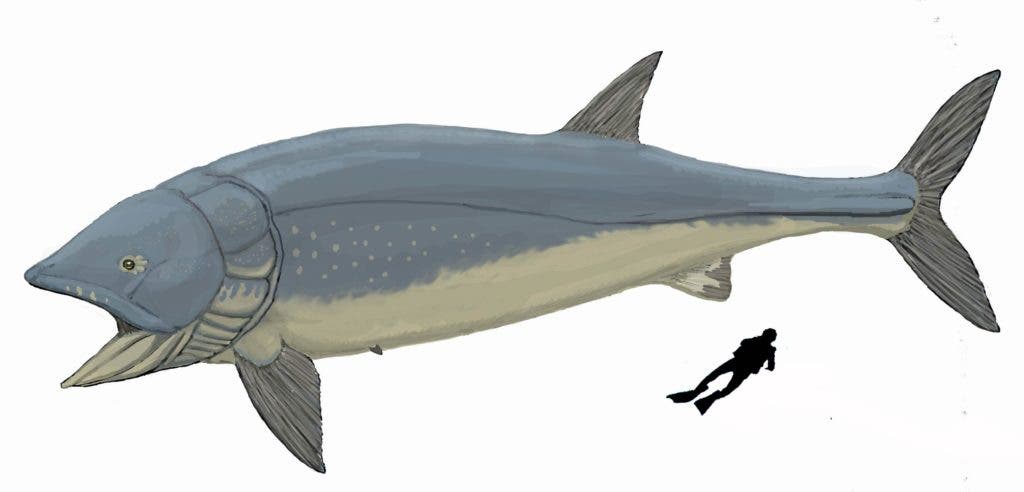
Illustration of giant Jurassic fish Leedsichthys next to human diver for scale. Credit: Wikimedia Commons.
Bony fish make up roughly 95% of all fish species. Intriguingly, despite the sheer amount of species, their sizes are not particularly varied, and bony fish are generally quite small. The biggest bony fish in the world is the ocean sunfish, which weighs around 2.3 metric tons. Meanwhile, cartilaginous fish grow to be far bigger, with species such as whale sharks weighing up to 34 metric tons. Scientists have attempted to explain this huge discrepancy by pinning it on metabolic constraints. However, such an assertion misses the bigger picture, a new study seems to suggest.
The international team of researchers from Spain, Brazil, and the UK studied an ancient bony fish called Leedsichthys problematicus, which swam in the oceans of the Jurassic era more than 160 million years ago. This was one of the largest bony fish ever to have lived. It was 15 meters long and weighed up to 45 metric tons, which means it was even larger than even today’s whale sharks.
Pieces of Leedsichthys fossils were first found by the British collector Alfred Leeds in 1889. Similar remains were subsequently found at other sites, from northern Germany to Normandy, Mexico and the Atacama desert in Chile. The giant fish was a vertebrate suspension-feeder that fed on large quantities of plankton.
Leedsichthys may be key in settling a debate among biologists that has been going on for some time: why are bony fish so small compared to their cartilaginous relatives? One argument says that large animals generally have to function with less oxygen per tissue mass, and since bony fish appear to have higher metabolic requirements than cartilaginous ones, it would simply be physically impossible for them to grow past a certain threshold. Such an assertion, however, is strongly disproved by ancient species such as Leedsichthys.
The new study suggests that the metabolic constraint argument doesn’t hold water in this discussion, and we need to look for something else. By the author’s calculations, which used data from living bony fish, Leedsichthys would not only have survived, but thrived too. According to results published in the journal Paleontology, the giant fish could have swum at speeds of up to 17.8 kilometers per hour, while still keeping its tissue properly oxygenated.
Scientists still don’t know why there aren’t any big bony fish alive today, but at least we now know that their metabolism isn’t to blame.









